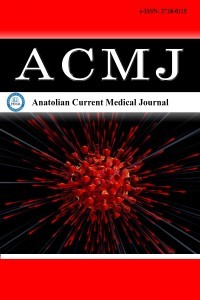1.
Hill NR, Fatoba ST, Oke JL, Hirst JA, et al. Global prevalence ofchronic kidney disease - a systematic review and meta-analysis.PLoS One. 2016;11(7):e0158765.
2.
Glassock RJ, Warnock DG, Delanaye P. The global burden ofchronic kidney disease: estimates, variability and pitfalls. Nat RevNephrol. 2017;13(2):104-114.
3.
Fluck R, Kumwenda M. Renal Association Clinical PracticeGuideline on vascular access for haemodialysis. Nephron ClinPract. 2011;118 Suppl 1:c225-c240.
4.
Hoggard J, Saad T, Schon D, et al. Guidelines for venous accessin patients with chronic kidney disease. A Position Statementfrom the American Society of Diagnostic and InterventionalNephrology, Clinical Practice Committee and the Associationfor Vascular Access. Semin Dial. 2008;21(2):186-191.
5.
Levin A, Lewis M, Mortiboy P, et al. Multidisciplinary predialysisprograms: quantification and limitations of their impact onpatient outcomes in two Canadian settings. Am J Kidney Dis. 1997;29(4):533-540.
6.
Chanouzas D, Ng KP, Fallouh B, Baharani J. What influencespatient choice of treatment modality at the pre-dialysis stage?Nephrol Dial Transplant. 2012;27(4):1542-1547.
7.
Van den Bosch J, Warren DS, Rutherford PA. Review of predialysiseducation programs: a need for standardization. Patient PreferAdherence. 2015;9:1279-1291.
8.
Lin MY, Cheng LJ, Chiu YW, et al. Effect of national pre-ESRD care program on expenditures and mortality in incidentdialysis patients: a population-based study. PLoS One.2018;13(6):e0198387.
9.
Campbell-Montalvo R, Jia H, Shukla AM. Supporting shareddecision-making and home dialysis in end-stage kidney disease.Int J Nephrol Renovasc Dis. 2022;15:229-237.
10.
Kalantar-Zadeh K, Lockwood MB, Rhee CM, et al. Patient-centred approaches for the management of unpleasant symptomsin kidney disease. Nat Rev Nephrol. 2022;18(3):185-198.
11.
Murea M, Grey CR, Lok CE. Shared decision-making inhemodialysis vascular access practice. Kidney Int. 2021;100(4):799-808.
12.
Combes G, Sein K, Allen K. How does pre-dialysis educationneed to change? findings from a qualitative study with staff andpatients. BMC Nephrol. 2017;18(1):334.
13.
Jia T, Bi SH, Lindholm B, Wang T. Effect of multi-dimensionaleducation on disease progression in pre-dialysis patients inChina. Ren Fail. 2012;34(1):47-52.
14.
Singhal R, Hux JE, Alibhai SMH, Oliver MJ. Inadequatepredialysis care and mortality after initiation of renal replacementtherapy. Kidney Int. 2014;86(2):399-406.
15.
Craig JC, Molony DA, Strippoli GFM. Evidence-BasedNephrology, 2 Volume Set. John Wiley & Sons; 2022.
16.
Dsouza B, Prabhu R, Unnikrishnan B, et al. Effect of educationalintervention on knowledge and level of adherence amonghemodialysis patients: a randomized controlled trial. Glob HealthEpidemiol Genom. 2023;2023:4295613.
17.
Saran R, Bragg-Gresham JL, Rayner HC, et al. Nonadherence inhemodialysis: associations with mortality, hospitalization, andpractice patterns in the DOPPS. Kidney Int. 2003;64(1):254-262.
18.
Parvan K, Hasankhani H, Seyyedrasooli A, Riahi SM, GhorbaniM. The effect of two educational methods on knowledge andadherence to treatment in hemodialysis patients: clinical trial. JCaring Sci. 2015;4(1):83-93.
19.
Tarverdizade Asl P, Lakdizaji S, Ghahramanian A, SeyedrasooliA, Ghavipanjeh Rezaiy S. Effectiveness of text messaging and faceto face training on improving knowledge and quality of life ofpatients undergoing hemodialysis: a randomized clinical trial. JCaring Sci. 2018;7(2):95-100.
20.
Shimizu Y, Nakata J, Yanagisawa N, et al. Emergent initiation ofdialysis is related to an increase in both mortality and medicalcosts. Sci Rep. 2020;10(1):19638.

